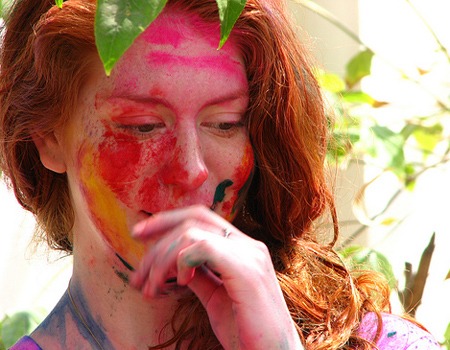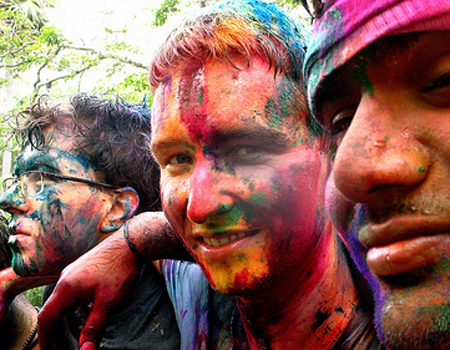Celebrated all over india, although more festive in the north, Holi signifies colour. If you are visitng around the festival, you have to experience it to know it.
March 1st 2010, Monday this year is the main day Holi, also known as Dhulheti, Dhulandi or Dhulendi, is celebrated by people throwing colored powder and colored water at each other. Bonfires are lit the day before, also known as Holika Dahan. It has a lot of fun rituals attached to it, the first is smearing of coloured powder on each other, and throwing water, coloured and scented using pichkaris, shaped like giant syringes or squirt guns. Sweet Laddoos, cakes, samosas or lassis laced with Bhaang (a grinded form of cannabis) are consumed by all the family and guests get larger helpings 🙂
Kids have water filled baloon wars, girls run away from boisterous boys who want to apply colour on their faces. Bands play loud music on the streets and everyone is having a blast. In cities like Mumbai and Delhi, the festival has become more commercial over the decades and there’re many hindi film tunes which people love to dance to..
Mathura, in Uttar Pradesh, where Lord Krishna was born has the biggest religious festivities and its hard to find a single person who is not coloured. Barsana is the place to be at the time of Holi. Here the famous Lath mar Holi is played in the sprawling compound of the Radha Rani temple. Thousands gather to witness the Lath Mar holi when women beat up men with sticks as those on the sidelines become hysterical, sing
Holi Songs and shout Sri Radhey or Sri Krishna. The Holi songs of Braj mandal are sung in pure Braj Bhasha.
Be weary of synthetic colours as they dont come off easily and sometimes take many showers to even fade off skin and hair. Wear old clothes if you dont want good ones smeared with festival dyes!! Consume Bhaang at your own risk as the effects can last for upto 10-12 hours and lying stoned on the sidewalk with other bhaanged out folks is not so much fun by the end of the day.


